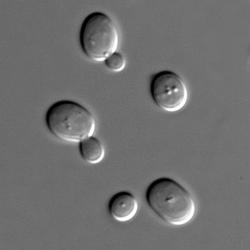Source Institutions
Source Institutions
Add to list Go to activity
Activity link broken? See if it's at the internet archive

In a series of three experiments, learners explore the basics of biotechnology using self-locking plastic baggies. Each experiment demonstrates a phenomenon or principle of biotechnology. In the first experiment, yeasts will anaerobically oxidize grape sugars to produce ethanol and carbon dioxide. The second experiment demonstrates denaturing protein in milk (cheese-making) and the third experiment uses yeast to leaven flour (bread-making). These experiments "in a bag" allow learners to explore biotechnology in a safe, convenient and inexpensive way. Adult supervision is recommended.
- Under 5 minutes
- 4 to 24 hours
- Over $20 per group of students
- Ages 14 - 18
- Activity, Experiment/Lab Activity, Lesson/Lesson Plan
- English
Quick Guide
Materials List (per group of students)
- self-locking plastic baggies (with perforations, quart size)
- self-locking plastic baggies (heavy-duty freezer bags, quart size)
- 5 grams dried baker's yeast (Saccharomyces)
- tape
- pH indicator strips
- scale
- 150 g of grapes
- paper and pen
- warm environment (25 degrees C)
- glowing splint or lighted match
- refractometer or densitometer (or an antifreeze tester)
- 250 ml fresh milk
- microwave
- thermometer
- 25 grams of blue (or roguefort) cheese
- 25 ml vinegar (optional)
- lard or cooking spray (to lightly grease inside of self-locking baggie)
- 150 g high gluten flour (bread flour)
- 10 g yeast
- 10 g sugar
- 1 g salt
- 40 degree C water
Subjects
-
Engineering and Technology
-
Engineering
- Bioengineering/Biomedical Engineering
-
Technology
- Agriculture and Biotechnology
-
Engineering
-
Life Sciences
- Cells
-
Diversity of Life
- Viruses and Bacteria
-
Physical Sciences
-
Chemistry
- Acids and Bases
- Oxidation-Reduction Reactions
-
Chemistry
-
Mathematics
-
Data Analysis and Probability
- Data Analysis
- Data Collection
-
Data Analysis and Probability
-
The Nature of Science
-
The Scientific Process
- Conducting Investigations
- Gathering Data
-
The Scientific Process
Informal Categories
- Food and Cooking
Audience
To use this activity, learners need to:
- see
- see color
- read
- touch
Learning styles supported:
- Involves teamwork and communication skills
- Involves hands-on or lab activities
Other
This resource is part of:
Access Rights:
- Free access
By:
- Kolb, Barbara
Rights:
- All rights reserved, Access Excellence @ the National Health Museum, 2009
